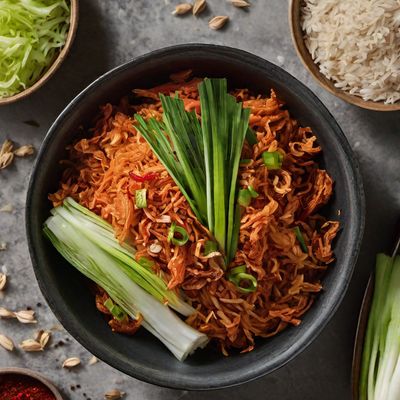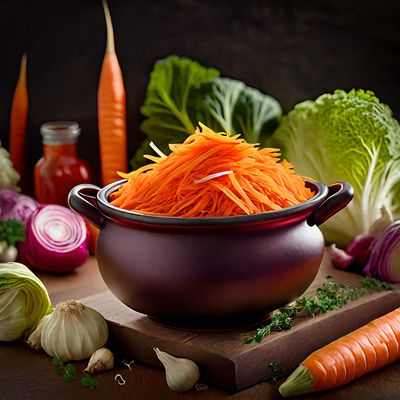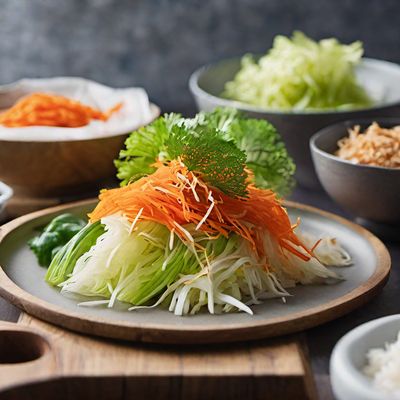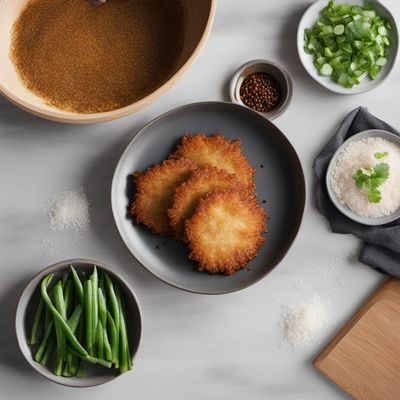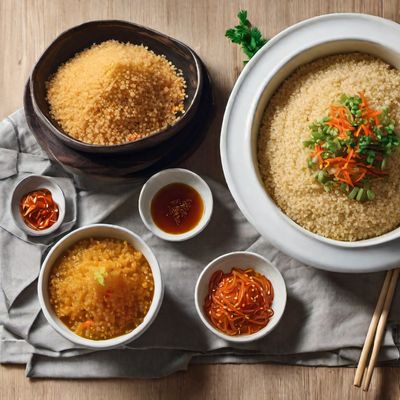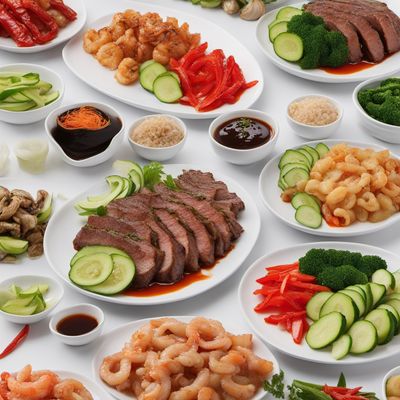
Recipe
Japanese-style Kimchi
Umami-packed Kimchi with a Japanese Twist
4.8 out of 5
In the context of Japanese cuisine, this recipe takes the beloved Korean dish, Kimchi, and infuses it with Japanese flavors. The result is a harmonious blend of spicy, tangy, and umami-rich flavors that will tantalize your taste buds. Get ready to experience the best of both worlds in this Japanese-style Kimchi recipe.
Metadata
Preparation time
20 minutes
Cooking time
N/A (fermentation time)
Total time
1-2 days (including fermentation and refrigeration time)
Yields
4 servings
Preparation difficulty
Easy
Suitable for
Vegetarian, Vegan, Gluten-free, Dairy-free, Low calorie
Allergens
Soy
Not suitable for
Nut-free, Soy-free, Paleo, Keto, High sodium
Ingredients
While the original Korean Kimchi is traditionally made with napa cabbage, this Japanese adaptation incorporates additional ingredients commonly found in Japanese cuisine. The use of miso paste and bonito flakes adds a distinct umami flavor, while the addition of shiso leaves provides a refreshing twist. The result is a unique fusion of Korean and Japanese culinary traditions. We alse have the original recipe for Kimchi, so you can check it out.
-
1 napa cabbage, cut into bite-sized pieces 1 napa cabbage, cut into bite-sized pieces
-
1 daikon radish, julienned 1 daikon radish, julienned
-
2 carrots, julienned 2 carrots, julienned
-
4 green onions, sliced 4 green onions, sliced
-
4 cloves of garlic, minced 4 cloves of garlic, minced
-
1 thumb-sized piece of ginger, grated 1 thumb-sized piece of ginger, grated
-
2 tablespoons Korean red pepper flakes (gochugaru) 2 tablespoons Korean red pepper flakes (gochugaru)
-
2 tablespoons miso paste 2 tablespoons miso paste
-
2 tablespoons soy sauce 2 tablespoons soy sauce
-
1 tablespoon rice vinegar 1 tablespoon rice vinegar
-
1 tablespoon sugar 1 tablespoon sugar
-
1 tablespoon bonito flakes 1 tablespoon bonito flakes
-
1 tablespoon sesame oil 1 tablespoon sesame oil
-
1 tablespoon shiso leaves, chopped 1 tablespoon shiso leaves, chopped
-
Salt, to taste Salt, to taste
Nutrition
- Calories (kcal / KJ): 80 kcal / 335 KJ
- Fat (total, saturated): 2g, 0.3g
- Carbohydrates (total, sugars): 14g, 6g
- Protein: 3g
- Fiber: 4g
- Salt: 1.5g
Preparation
-
1.In a large bowl, combine the napa cabbage, daikon radish, carrots, green onions, garlic, ginger, Korean red pepper flakes, miso paste, soy sauce, rice vinegar, sugar, bonito flakes, sesame oil, and shiso leaves.
-
2.Using clean hands, massage the ingredients together until the cabbage starts to soften and release its juices. This will take about 5 minutes.
-
3.Taste the mixture and add salt if needed.
-
4.Transfer the kimchi into a clean, airtight jar, pressing it down firmly to remove any air pockets.
-
5.Leave the jar at room temperature for 1-2 days to allow fermentation to occur. Then, refrigerate for at least 1 week before consuming to develop the flavors.
Treat your ingredients with care...
- Napa cabbage — Make sure to thoroughly wash and dry the cabbage before cutting it into bite-sized pieces.
- Korean red pepper flakes (gochugaru) — Adjust the amount according to your desired level of spiciness.
- Miso paste — Choose a high-quality miso paste for the best flavor.
- Bonito flakes — Look for bonito flakes that are free from additives or preservatives.
- Shiso leaves — If shiso leaves are not available, you can substitute with fresh basil leaves for a similar flavor.
Tips & Tricks
- For a milder flavor, reduce the amount of Korean red pepper flakes.
- Allow the kimchi to ferment for longer if you prefer a stronger and more tangy flavor.
- Serve the kimchi as a side dish or use it as a topping for rice bowls, sushi rolls, or ramen.
- Store the kimchi in the refrigerator for up to 1 month.
Serving advice
Serve the Japanese-style Kimchi as a side dish alongside your favorite Japanese dishes, such as sushi, tempura, or grilled fish. It also pairs well with steamed rice or as a topping for Japanese-style noodle soups.
Presentation advice
Arrange the Japanese-style Kimchi in a small dish or bowl, garnished with a sprinkle of sesame seeds and a few shiso leaves for an attractive presentation. The vibrant colors of the vegetables will make it visually appealing.
More recipes...
For Kimchi » Browse all
For Korean cuisine » Browse all
More Korean cuisine dishes » Browse all
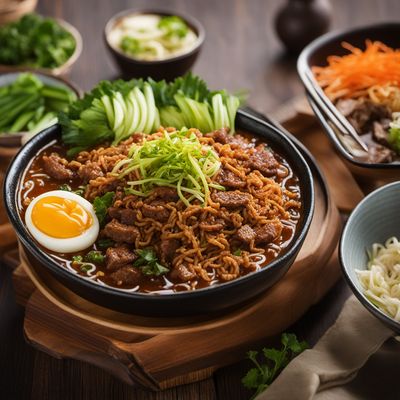
Jjapaguri
Jjapaguri is a Korean noodle dish that is typically served as a lunch or dinner dish. The dish is made with two types of instant noodles,...

Manduguk
Dumpling soup
Manduguk is a traditional Korean soup made with dumplings and beef broth.
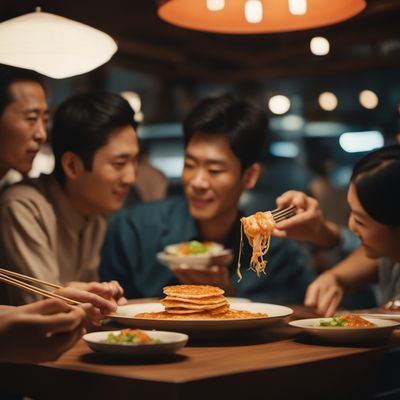
Saewoojeon
Shrimp Pancake
Saewoojeon is a popular Korean dish made with shrimp and vegetables. It is a savory and crispy pancake that is perfect as an appetizer or snack.
More Japanese cuisine dishes » Browse all

Saba zushi
Mackerel Sushi
Saba zushi is a traditional Japanese dish that consists of vinegared sushi rice wrapped in a pickled mackerel fillet.
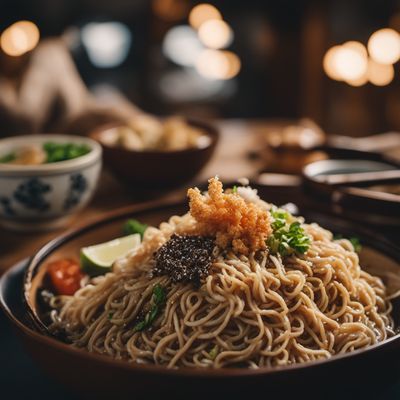
Tanuki soba
Buckwheat Noodles with Tempura
Tanuki soba is a Japanese noodle dish made with buckwheat noodles and a savory broth.

Bonjiri yakitori
Chicken Tail Yakitori
Bonjiri yakitori is a Japanese dish made with chicken tail. It is a popular street food in Japan and is often served on skewers.
